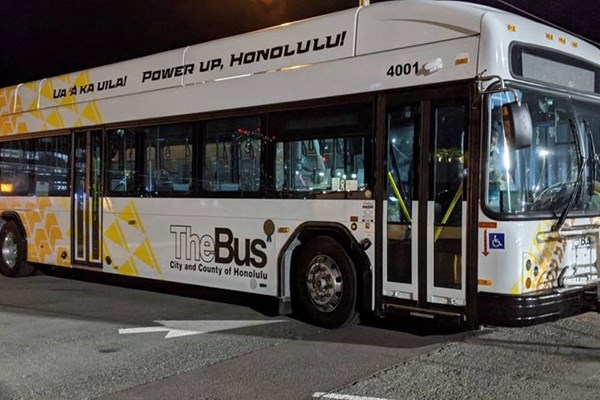EVs are on the rise, but is that enough?
Jan 27, 2022

As personal electric vehicles (EVs) continued to grow increasingly popular with consumers nationally and in Hawaii in 2021, Hawaii’s state and county governments leaders made great strides throughout the past year to demonstrate their commitment to transition to cleaner transportation options for their constituents. State and county clean transportation efforts continue to promote more resilience in 2022.
As of December 2021, the State of Hawaii Department of Business, Economic Development, and Tourism (DBEDT) recorded 17,735 registered passenger EVs statewide, a 32.1% increase since December 2020. During that same period, the Hawaii Department of Transportation (HDOT) also committed to revamping its own vehicle fleet by introducing EVs through an innovative service contract, potentially saving 75% annually in vehicle maintenance and $287 per vehicle per year in fuel costs. According to HDOT, transitioning to EVs not only reduces government spending, but also eliminates 8,700 pounds of carbon dioxide that would have been released into Hawaii's atmosphere for each single internal combustion engine replaced with an EV. The service contract also allows other state and county entities to procure their own EVs and charging infrastructure on a per-mile cost basis. Through these efforts, state government sets an example for residents by making tangible efforts to reduce its own carbon footprint.
However, electrifying individual vehicles is only one part of the solution toward decarbonization. In reality, increasing use of trips via gas-powered cars is on the rise, undermining progress. This is measured as vehicle miles traveled (VMT) and can be addressed by ensuring our transportation system is designed around moving people — not just their cars — no matter how individuals choose to get around. This issue becomes more meaningful when contrasting what our community generally finds acceptable to pay to park a vehicle versus house an individual.
In an article titled US Emissions Surged in 2021: Here’s Why in Six Charts, Inside Climate News recently reported that: “EVs at this time cannot offset rising emissions from increased travel rates and non-electric passenger vehicles sales, according to an International Energy Agency report.”
Data is not yet available specifically for Hawaii, but HDOT traffic counts suggest the same likely trend here in the islands.
That’s why Ulupono Initiative applauds the City and County of Honolulu's efforts to expand cleaner transportation options by introducing City e-buses; expanding bike lanes; and restructuring routes, building sidewalks and creating safer walking environments throughout the island.
We also support community-based collaborations like those between Better Block Hawaii, Envision Kaimuki, Re-use Hawaii and local artists to convert neglected parking spaces into environmentally friendly and visibly appealing parklets. Equipped with tables, benches, safety barriers and landscaping, the parklets repurpose recycled construction materials into usable furniture and support local businesses by providing safe havens for their customers to relax, mingle and eat. First appearing in Kaimuki during the pandemic in 2020, new parklets were constructed on Oahu in 2021 — the most recent one in Kalihi with support from AARP Hawaii.
In addition, we sponsored and participated in last year’s Hawaii Bike Challenge, which was created with a mission of encouraging Hawaii residents to give bicycling a try or use their bikes more frequently for different types of trips. Many participants walked away — or rode away — hooked on biking whether for fun and exercise or as part of their regular commute.
Throughout 2022, Ulupono Initiative will maintain its commitment to supporting clean transportation projects statewide while continuing to monitor progress on the new statewide EV service contract and implementation of Complete Streets concepts. As the year progresses, be on the lookout for new sustainable clean transportation ventures supported by Ulupono Initiative.

